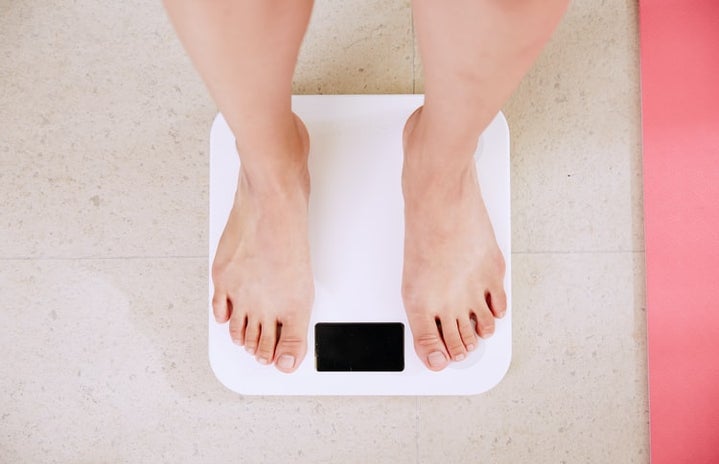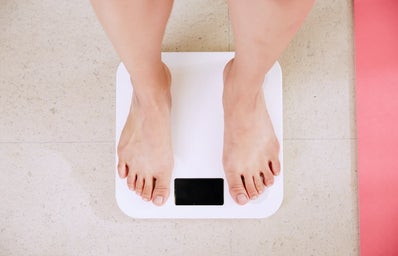It’s no secret: We live in a world that glorifies an individual’s physical appearance, categorizing it as the most important and defining thing about a person. It is also no secret that the consequences of this way of life most often affect women. For the longest time, girls and women of every age have been fed images and messages that both implicitly and explicitly promote a certain body shape, whether it’s Victorian England’s “desirably plump,” “heroin chic” from the ‘90s, or today’s “healthy skinny.”
Recently, though, many have started to accept and advance the idea that not all women look a certain way — namely thin, today — and that not all women want to look a certain way. In 2016, supermodel Ashley Graham became the first plus-size model to be featured on the cover of Sports Illustrated Swimsuit Edition, something many believed would never happen and something others believed should never happen. Nevertheless, Graham continues to overcome those obstacles and became the first plus-size model to walk in a Michael Kors fashion show the following year.
Since then, other historical moments have been made in the fashion world. Fendi’s Fall Winter 2020 fashion show featured models Paloma Elsseser and Jill Kortleve, “making it the first time Fendi cast[ed] plus-size models for its shows,” according to Mario Abad of Paper Magazine. Additionally, during the Spring 2021 Milan Fashion Week, models Alva Claire, Precious Lee, and Jill Kortleve (again) walked for Versace — the first plus-size models ever to do so for the luxury brand.
Yet despite this progress, the effects of COVID-19 have set us back. At the beginning of the quarantine period in the U.S., there seemed to be a theme going around that everyone was supposed to be “making the most” of the time spent indoors and shielded from the rest of the world. However, this quickly became a highly toxic message.
“Now, I don’t blame anyone for taking up a new hobby in order to distract themselves,” wrote Lindsay Schallon, a writer for Glamour Magazine, at the beginning of April 2020. “But… the idea that we should be using all this ‘extra time’ to lose weight, or at least not gain any… moves beyond feeling productive and gives into a societal fear I thought we were moving past: Getting ‘fat.’”
You may be thinking, “But we did get past that, Lindsay. After all, countless plus-size models are making history day after day. Right?”
Wrong.
COVID-19 has rebooted the culture that torments women who don’t look like the “approved” body type of the decade. Indeed, Schallon remarked on how it disturbed her to see “an alarming number of people… publicly broadcasting their fear that this time indoors will cause them to gain weight.” What’s more, the ever-active “algorithm” has begun targeting women “with weight loss ads specifically geared to the fact that [they’ll] have ‘stubborn fat’ post isolation.”
While nearly all of social media has played a role in revitalizing the toxic body-shaming culture, TikTok stands out. Even prior to COVID-19, it was widely known that “conventionally attractive people have more success on the app,” writes Madelyn Haasken, a college writer for Study Breaks Magazine. TikTok’s most popular and viral videos often depict “relatively young and attractive people,” which sets a precedent that in order to be successful on the app, you must be “beautiful.”
During quarantine, though, this culture notably expanded. Not only have unrealistic body and beauty standards been set, but a culture of competition has followed in its wake. Countless dangerous trends, like the “back profile challenge” and measuring your nose with your finger to determine whether or not you’re “pretty,” have emerged on the app that specifically call attention to peoples’ insecurities about their physical appearance. This not only promotes an intolerance of “unconventional” bodies, it also prompts girls to compare themselves to each other. It has even gotten to the point where eating disorders and eating disorder culture are encouraged and subsequently rewarded with thousands to millions of views and likes.
No matter the trend, though, peoples’ TikTok feeds are swamped with clips that result in women second-guessing their physical appearance and it seems to be because COVID-19 has left us with nothing to do but admire others’ seemingly perfect bodies and subsequently criticize our own.
But there are TikTokers out there who have made it their mission to combat this toxic culture. Brooklynne Webb, age 16, dueted a TikTok of herself alongside other body-positive TikTokers in which she lowered the waist-band of her leggings to display her relaxed and not-flat stomach. Naturally, there were thousands of negative comments, trollers saying things like, “she needs to drop some calories.” Brooklynne, however, has not let the negative comments discourage her. Instead, she continues to post TikToks with body-positive messages.
These kinds of positive messages can be found outside of TikTok as well, though. Accounts on Instagram like @feminist have promoted positive thinking around body image, particularly during quarantine, by posting photos and graphics that highlight (perfectly normal) imperfections of the female body, and that remind us: a pandemic is not a productivity or weight loss competition.
But what can we do? As targets of this culture, it can feel difficult for many girls and women to escape. However, by arming ourselves with the knowledge that “conventional beauty” is only a social construct and that there is no one way for a woman to look, we will all be better equipped to resist the effects of this growing harmful culture.


